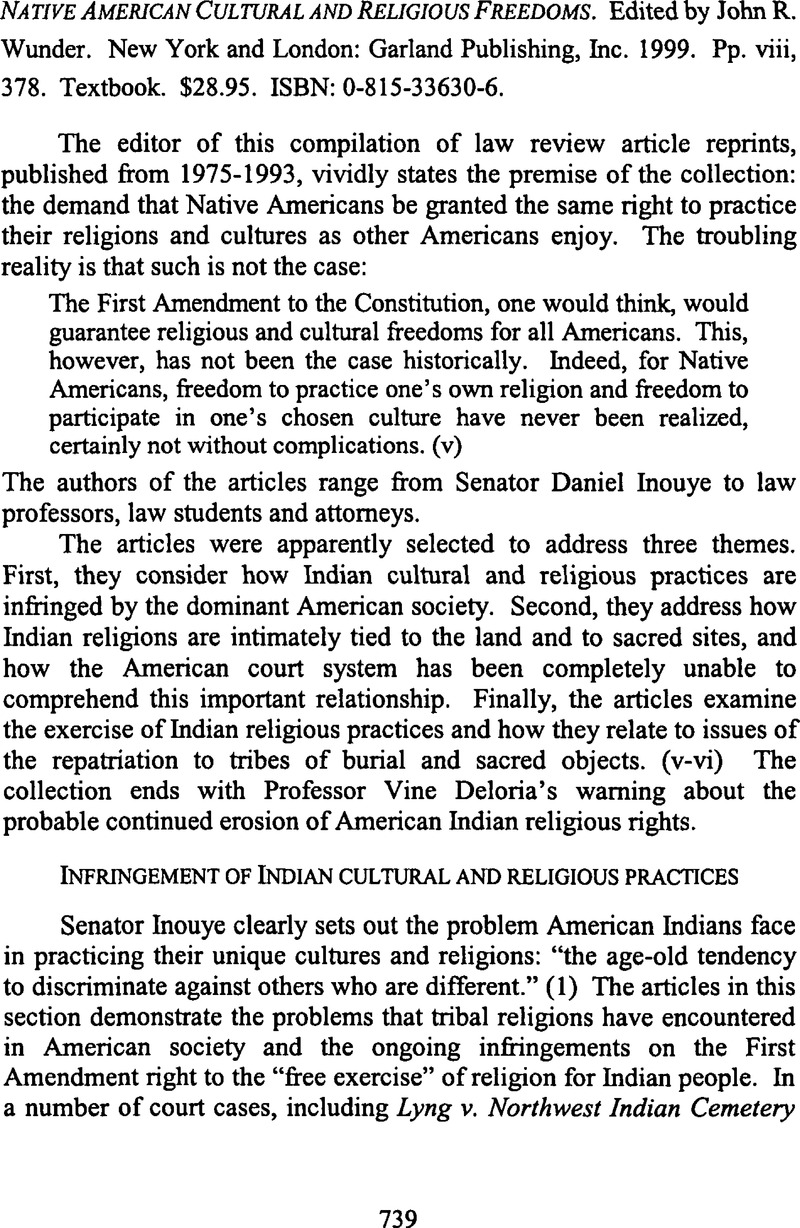No CrossRef data available.
Article contents
Native American Cultural and Religious Freedoms. Edited by John R. Wunder. New York and London: Garland Publishing, Inc.1999. Pp. viii, 378. Textbook. $28.95. ISBN: 0-815-33630-6.
Published online by Cambridge University Press: 24 April 2015
Abstract

- Type
- Review Essays and Reviews
- Information
- Copyright
- Copyright © Center for the Study of Law and Religion at Emory University 2000
References
1. 485 U.S. 439 (1988).
2. 476 U.S. 734(1986).
3. 494 U.S. 872 (1990).
4. 42 U.S.C. § 2002 (2002):
[On and after August 11, 1978,] it shall be the policy of the United States to protect and preserve for American Indians their inherent right of freedom to believe, express, and exercise the traditional religions of the American Indian, Eskimo, Aleut, and Native Hawaiians, including but not limited to access to sites, use and possession of sacred objects, and the freedom to worship through ceremonials and traditional rites.
5. See Lyng v. NW Indian Cemetery Protective Assn. 485 U.S. 439, 455 (1988); Crow v. Gullet, 541 F. Supp. 785, 793 (D. S.D. 1982) (AIRFA “does not create a cause of action in federal courts”).
6. President Clinton's Executive Order, “to protect and preserve Indian religious practices,” requires federal Executive Branch agencies to manage federal lands to accommodate access to, ceremonial use of, and the preservation of Indian sacred sites. Indian Sacred Sites, Exec. Or. 13, 007, 3 C.F.R. 196(1996).


